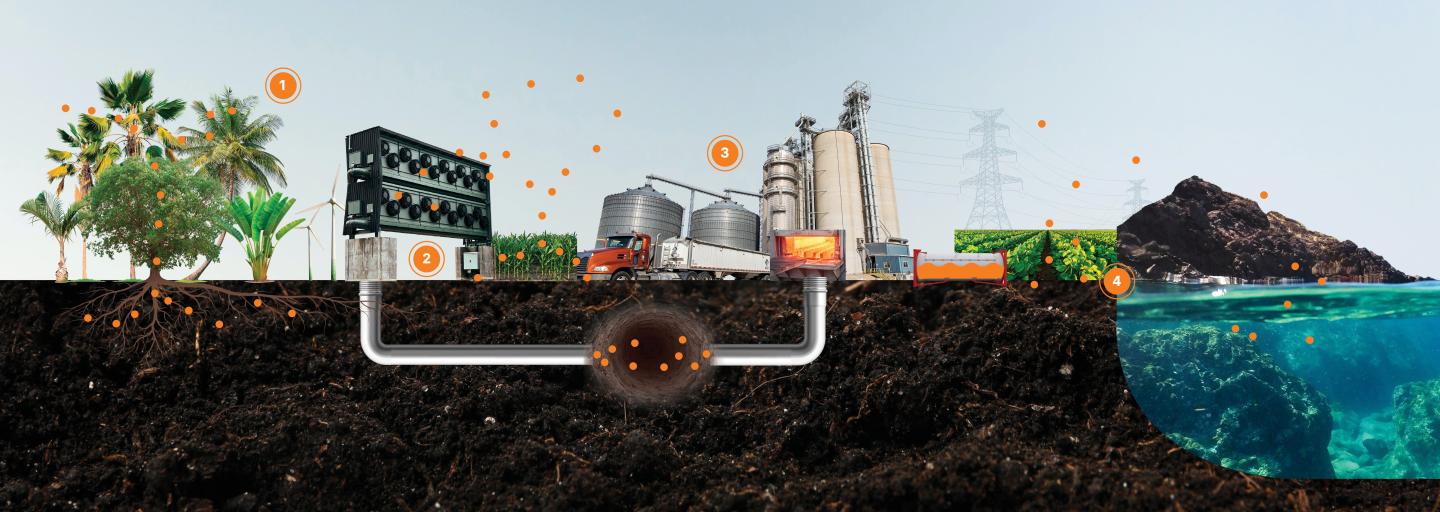Climate change poses one of the most significant challenges of our time, requiring immediate and innovative action. Among the various strategies to mitigate its impact, carbon removal and storage have emerged as critical components. This article explores how these techniques can help tackle climate change and what steps can be taken to implement them effectively.
Understanding Carbon Removal and Storage
Carbon removal involves extracting carbon dioxide (CO₂) from the atmosphere and storing it securely. There are several methods for achieving this, including:
- Natural Solutions:
- Afforestation and Reforestation: Planting new forests and restoring existing ones to absorb CO₂.
- Soil Carbon Sequestration: Enhancing soil’s ability to store carbon through sustainable agricultural practices.
- Technological Solutions:
- Direct Air Capture (DAC): Machines that capture CO₂ directly from the air and store it underground.
- Bioenergy with Carbon Capture and Storage (BECCS): Using biomass for energy and capturing the emitted CO₂.
- Ocean-Based Solutions:
- Ocean Fertilization: Adding nutrients to the ocean to boost the growth of phytoplankton, which absorbs CO₂.
- Alkalinity Enhancement: Adding alkaline substances to the ocean to increase its capacity to store carbon.
The Importance of Carbon Removal and Storage
- Meeting Climate Goals: The Intergovernmental Panel on Climate Change (IPCC) emphasizes that carbon removal is essential to limit global warming to 1.5°C above pre-industrial levels.
- Complementing Emission Reductions: While reducing emissions is crucial, carbon removal addresses the excess CO₂ already in the atmosphere, providing a more comprehensive approach.
- Protecting Ecosystems: By reducing atmospheric CO₂, we can mitigate adverse effects on ecosystems, such as ocean acidification and biodiversity loss.
Challenges and Solutions
Implementing carbon removal and storage at scale presents several challenges:
- Technological Barriers: Advanced technologies like DAC are expensive and energy-intensive. Investment in research and development can drive innovation and cost reduction.
- Financial Constraints: Large-scale projects require significant funding. Governments and private sectors need to collaborate to create financial incentives and support mechanisms.
- Regulatory Hurdles: Clear regulations and policies are needed to ensure safe and effective carbon storage. International cooperation can harmonize standards and practices.
- Social Acceptance: Public awareness and acceptance are crucial. Engaging communities and stakeholders in the planning process can build trust and support.
Steps to Enhance Carbon Removal and Storage
- Policy Support: Governments should enact policies that incentivize carbon removal and provide funding for research and deployment.
- Public-Private Partnerships: Collaboration between governments, businesses, and research institutions can drive innovation and investment in carbon removal technologies.
- Education and Advocacy: Raising awareness about the benefits and safety of carbon removal can garner public support and drive policy changes.
- International Cooperation: Climate change is a global issue, requiring coordinated efforts. International agreements and collaborations can enhance the effectiveness of carbon removal initiatives.
Carbon removal and storage are vital components of the strategy to tackle climate change. By addressing the excess CO₂ in the atmosphere, these techniques offer a way to complement emission reduction efforts and protect our planet. With the right policies, investment, and public support, we can advance these technologies and make significant strides towards a sustainable future.
Together, we can harness the power of innovation and nature to combat climate change and secure a healthy environment for future generations.











